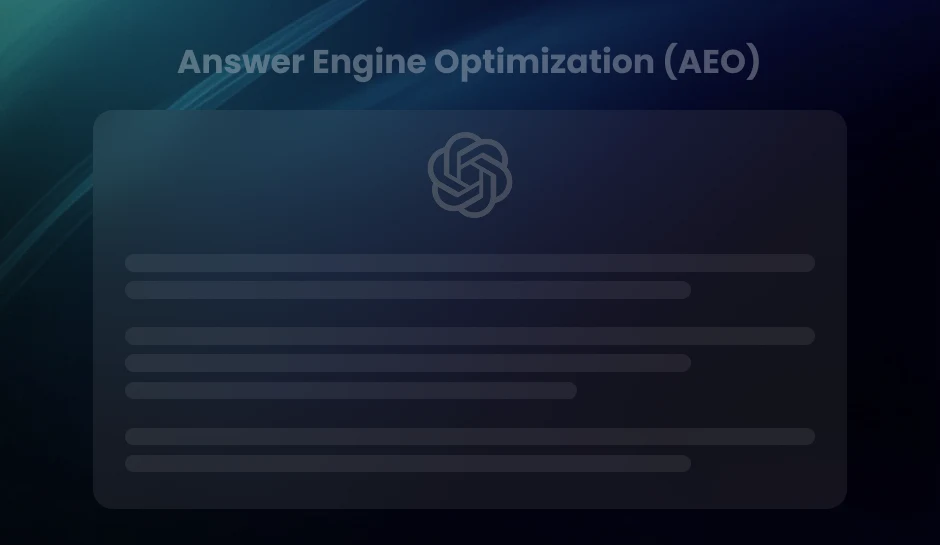
Mastering Oversight: How a Data Governance Dashboard Transforms Enterprise Data Management
A modern data governance dashboard is more than a reporting tool, it’s your enterprise command center for data trust, compliance, and accountability. Learn how to operationalize governance and align it with strategic business outcomes.
A Data Governance Dashboard serves as a centralized interface for monitoring, measuring, and managing data governance initiatives across an organization. Visualizing critical metrics, such as data quality scores, policy adherence, and data lineage, brings structure and clarity to complex data ecosystems. Transparency increases when stakeholders gain real-time insight into data usage and ownership. Compliance with frameworks like GDPR, HIPAA, or CCPA becomes traceable, measurable, and audit ready. Confidence rises across operations when teams access data with clear provenance and consistent standards.
As businesses ingest, produce, and activate more data than ever before, governance can no longer be reactive or fragmented. The dashboard acts as a command center, aligning technical teams, legal departments, analysts, and executives through a unified lens. What happens when data scientists no longer second-guess data quality? When will compliance officers be able to retrieve audit trails in seconds? When do business units trust the definitions behind KPIs? Users at every level perform with greater precision when a trustworthy, governed data infrastructure backs them.
What Is a Data Governance Dashboard?
Definition and Key Characteristics
A data governance dashboard is a centralized, visual interface that displays critical metrics, KPIs, policies, and operational insights related to an organization’s data governance efforts. It provides real-time visibility into how data is managed, governed, and secured across the enterprise. Unlike general-purpose dashboards, it focuses specifically on data quality, lineage, compliance, stewardship, and policy enforcement.
This type of dashboard consolidates information from various governance tools and processes. It highlights data ownership, access controls, governance maturity levels, and exceptions to policy standards. Typical components include policy adherence rates, data classification breakdowns, steward activity summaries, and data lifecycle tracking status. The goal is to create immediate awareness of data-related risks and governance activities.
The Role It Plays in Data Management and Governance Processes
Within the broader data management landscape, the governance dashboard functions as an operational control room. It enables governance stakeholders, such as data stewards, compliance officers, and data owners, to monitor, measure, and manage policies and controls proactively. By presenting granular and aggregate information, it supports tactical execution (issue identification and resolution) and strategic analysis (trend monitoring and capacity planning).
For CDOs and governance leads, the dashboard ties day-to-day data operations to overarching compliance and regulatory frameworks. Whether you’re ensuring GDPR readiness or enforcing internal metadata standards, this tool connects governance policy with practical enforcement outcomes. It strengthens accountability and creates a feedback loop between governance rules and business performance.
Single-Pane-of-Glass for Data Health and Governance Status
A well-integrated governance dashboard consolidates siloed datasets and policy enforcement signals into a unified view. This “single-pane-of-glass” setup eliminates the need to access multiple platforms or reports to assess enterprise data health. All key governance indicators, from data completeness scores to stewardship performance metrics, are presented in one location, updated in near real-time.
Such visibility transforms governance from a back-office function into a strategic command center. Patterns in data anomalies, adherence to retention schedules, emerging compliance risks, and stewardship bottlenecks can be identified immediately. Instead of sifting through logs and spreadsheets, governance teams use a single interface to prioritize work and coordinate cross-functional actions.
Pro Tip – Ensure your data governance dashboard includes drill-down capabilities. Surface-level metrics are useful, but the ability to explore underlying data, such as viewing specific non-compliant assets or unresolved issues, empowers teams to take immediate, targeted action without switching tools or relying on manual follow-ups.
Core Functions of a Data Governance Dashboard
Monitoring Data Quality in Real Time
Real-time data quality monitoring eliminates lag in discovering issues. A well-configured dashboard surfaces anomalies the moment they occur-nulls where there should be values, type mismatches, constraint violations, and unexpected schema changes. Combining anomaly detection models with streaming pipelines allows immediate validation of incoming data.
For example, a drop in fill rates on required fields or a spike in duplicate records is immediately apparent on a heatmap or trendline, prompting swift intervention. Dashboards also track data freshness, consistently comparing actual ingestion timestamps against expected SLAs across sources.
Visualizing Data Lineage to Ensure Traceability
Data lineage views map how data flows from origin to transformation to output, providing visual context for dependencies. These lineage graphs track changes across pipelines, enabling users to pinpoint where alterations occurred. When a derived metric shifts unexpectedly, lineage makes it clear whether the root cause lies in upstream source changes, transformation scripts, or visualization logic.
By integrating with metadata repositories and ETL orchestration logs, dashboards automatically render end-to-end lineage diagrams. These aren’t static models-they update dynamically as new jobs run, and schemas evolve.
Displaying Metadata Management Insights
Governance dashboards capture metadata at multiple layers: technical metadata from schema definitions, operational metadata from data movement logs, and business metadata from glossaries. Presenting these elements side by side clarifies how concepts map across domains. For instance, clicking into a KPI can expose both the SQL behind it and the business term used in executive reports, bridging the semantic gap.
System-wide metadata statistics, such as catalog completeness percentages or unused asset counts, provide an immediate view into metadata health at scale.
Providing Access to Role-Based Access Controls (RBAC) Info
Dashboards centralize audit information about who can access what. RBAC panels list user groups, their assigned roles, and the specific data domains to which they have access. Users can filter by dataset or role to view associated permissions and quickly identify gaps or violations.
By syncing directly with IAM systems, the dashboard reflects the current state of user access in real time. Admins can detect excessive privilege grants or unauthorized access by simply comparing expected policies to the actual privileges displayed.
Summarizing Policy Enforcement Tracking
Every governance policy-whether it’s PII masking, data retention, or access duration-is only useful if enforcement is actively monitored. Dashboards break down where policies are applied, where they’re failing, and what percentage of systems comply. A time-series view reveals whether compliance is increasing or decreasing.
Policy triggers based on rules engines (e.g., minimum encryption standards or revalidation intervals) feed directly into the dashboard for continuous assessment. Violations generate incident alerts and can be linked to remediation workflows.
Displaying Audit Trails and Data Usage Logs
Comprehensive audit trails create transparency. Dashboards collect historical logs of query executions, data exports, transformation edits, and permission changes. Data usage metrics add further context-a frequently accessed dataset with no metadata? A table generating heavy outbound traffic after hours?
Heatmaps and user activity charts highlight consumption trends by user, department, or application. These insights lead directly to optimizations, such as revoking stale access, scaling infrastructure, or revisiting documentation for high-use assets.
Pro Tip – Prioritize configurability. Empower users to customize views, alerts, and filters based on their roles, whether they’re data stewards, engineers, or compliance leads. A flexible dashboard ensures relevance, avoids data fatigue, and drives faster, more accurate governance decisions across the organization.
Key Metrics Every Data Governance Dashboard Must Display
| Metric Category | Metric Name | Description | Why It Matters |
|---|---|---|---|
| Data Stewardship Metrics | Number of Data Issues Resolved | Tracks total and categorized data issues resolved (e.g., duplication, misclassification). | Indicates operational discipline and effectiveness of stewardship efforts. |
| Timeliness of Stewardship Interventions | Measures time from issue detection to resolution, segmented by severity. | Reflects agility and responsiveness of data stewardship team. | |
| Data Governance KPIs | % of Critical Data Lacking Ownership | Shows proportion of high-value datasets without clear ownership. | Identifies governance gaps and accountability risks. |
| Data Policy Compliance Rates | Measures adherence to data retention, classification, and sharing policies. | Indicates maturity of governance culture and controls. | |
| Risk Management Metrics | Data Breach Likelihood | Assesses risk using factors like access violations, sensitive data volume, and unresolved vulnerabilities (e.g., FAIR model). | Quantifies data exposure and helps prioritize mitigation efforts. |
| Data Access Anomaly Detection | Detects behavioral anomalies such as unusual access patterns, geo-locations, or time of access. | Enables early detection of potential breaches or misuse; supports proactive risk management. |
Crafting a Data Governance Dashboard with Purpose
Intuitive UI/UX for Diverse Users
An effective data governance dashboard makes information navigable for both data stewards and business leaders. That means bypassing dense technical jargon and presenting quality, lineage, and compliance status with visual clarity. Dropdown filters, heatmaps, and color-coded KPIs translate complex backend metrics into immediately digestible content. Navigation patterns anticipate user needs, technical users may dive into schema-level metadata, while business users want a quick pulse on data trustworthiness for strategic decisions.
A user-friendly interface also adapts to daily usage patterns. Commonly accessed reports frequently viewed datasets, and recent changes in governance scores must be accessible within two clicks. Visual hierarchy, through typography, spacing, and iconography, guides attention to the most actionable data points.
Role-Based Interface Customization
Dashboards built for data governance must be context aware. A compliance officer, a data engineer, and a CDO don’t require the same view. Role-based customization allows each user group to access relevant dashboard sections, controls, and datasets based on their assigned privileges and responsibilities.
- Data engineers prioritize schema changes, data lineage traceability, and transformation logs.
- Compliance teams need access to policy adherence metrics, audit trails, and data classification statuses.
- Business managers focus on data accuracy scores, SLA breaches, and the availability of certified datasets.
By enforcing role-based layouts and filter presets, platforms minimize clutter while safeguarding sensitive governance configurations and operational workflows.
Seamless Integration with Existing Tools
Dashboards gain purpose when they integrate with and leverage the existing data governance ecosystem. Integration with systems like metadata catalogs, data quality tools, master data management platforms, and policy engines enables the dashboard to act as a single pane of glass.
For example, leveraging APIs from data catalogs like Collibra or Alation enables users to explore dataset lineage without leaving the dashboard. Integrating with workflow orchestration tools surfaces outstanding data quality rule violations, pending approvals, or exception handling logs, all without requiring context switching. Strong integration eliminates blind spots and increases cross-functional trust in shared data assets.
Real-Time Alerts and Automated Workflow Triggers
Static dashboards offer only retrospective insight. Governance requires instant responsiveness. Real-time alerts transform the dashboard into a control hub, highlighting SLA breaches the moment they occur, flagging PII exposures within seconds, and notifying owners when datasets lose certification status.
Triggers further automate governance actions. When a data quality score drops below the threshold, a trigger can launch a remediation workflow via a ticketing system like Jira or ServiceNow. If lineage breaks due to a failed job, the dashboard can assign audit tasks automatically to the relevant data engineer. These automation hooks reduce manual oversight while driving faster resolution paths across the organization.
Pro Tip – Design your dashboard with “role-first logic.” Before adding charts or filters, map out who will use the dashboard, what questions they’ll ask, and what actions they’ll take next. Tailored usability isn’t a nice-to-have, it’s what turns a governance dashboard from passive reporting into active decision-making.
The Role of Automation in a Governance Dashboard
Scalability Through Automated Data Quality Checks
Manual data validation cannot keep pace with the volume and velocity of modern data environments. Automation solves this by running real-time, systemwide data quality checks across diverse sources. These algorithms can identify missing values, schema drift, and inconsistent formatting without human intervention.
For example, an automated rule might flag any customer record missing a valid email address or birthdate. Multiply this by thousands of records per second, and the scale becomes clear. According to Experian’s 2023 Global Data Management Report, 85% of organizations report that inaccurate data impacts their operations. Automation directly mitigates this by enforcing data rules continuously, not periodically.
Alerting and Notification for Non-Compliance
When policies are violated, timely responses are crucial. Automated dashboards monitor compliance metrics 24/7 and trigger immediate alerts when thresholds are breached. These can be routed via Slack, email, or system logs depending on urgency and business context.
- Access violations trigger alerts when unauthorized roles query restricted datasets.
- Retention policy breaches surface when aging records are retained beyond regulatory limits.
- Threshold-based controls send notifications when data usage patterns deviate from pre-set norms.
This real-time alerting replaces reactive audits with proactive governance. Gartner predicts that by 2026, automated data governance will reduce compliance costs by 30% at data-mature organizations.
Auto-Updating Lineage and Impact Analysis Diagrams
Data lineage changes constantly as systems evolve, pipelines update, and dependencies shift. Without automation, diagrams quickly become obsolete. Governance dashboards now utilize metadata crawlers and pipeline introspection tools to update relationships as they change automatically.
This dynamic mapping shows where the data originated, how it has been transformed, and where it’s being used, down to the column level. When analysts modify an upstream dataset, the dashboard flags downstream reports and models that are affected in real-time. That’s impact analysis driven by automation, not guesswork.
Platforms like Collibra, Atlan, and Alation offer lineage features powered by metadata ingestion and job parsing. As new transformation jobs run or schemas evolve, diagrams update continuously without requiring manual redraws or user input.
Pro Tip – Automate the boring but critical. Focus automation on high-volume, repetitive governance tasks, like data quality checks, access alerts, and lineage updates, so teams can concentrate on exceptions, escalations, and strategy. Let the dashboard do the watching; your people can do the thinking.
Aligning Governance with Business Goals
Translating Corporate Strategy into Data-Driven Action
A well-constructed data governance dashboard doesn’t operate in isolation; it reflects and reinforces overarching business objectives. By visualizing the intersection between data quality, risk, compliance, and operational KPIs, the dashboard aligns tactical data management with strategic business goals. This alignment isn’t incidental. Dashboards can be configured to track governance metrics that map directly to performance indicators, such as customer churn, revenue attribution, time-to-market, or supply chain efficiency.
For instance, if customer experience is a strategic focus, the dashboard can highlight data consistency across CRM platforms or flag incomplete records that hinder personalization efforts. When stakeholders see data governance metrics tied to actual business impact, decision-making accelerates, and justifications for data initiatives become tangible.
Driving Empowerment Through Decision-Ready Data
When governance dashboards surface the right level of context, ownership status, policy lineage, and quality scoring, data users stop second-guessing and start executing. Analysts no longer waste hours validating data reliability. Instead, they act. Executives shift from intuition to insight-backed decisions because the governance layer clarifies where data originates, how it’s processed, and whether it’s trustworthy.
- Data stewards identify anomalies before they disrupt reports.
- Product teams monitor consent rates for regulatory compliance in user analytics.
- Finance managers compare standardized definitions of revenue across departments.
By embedding trust signals and real-time quality metrics, the dashboard turns passive data access into fully governed, confident data use.
Raising Literacy and Unifying Processes
Governance dashboards act as dynamic education platforms. Instead of siloed data policies hidden in internal wikis, terminologies, standards, and data ownership become visible and consumable. A glossary widget, for example, reinforces consistent use of key business terms; lineage views explain transformations; ownership metadata reduces bottlenecks by clarifying who to contact.
This visibility fosters a shared language across technical and business teams. Sales leaders understand the lifecycle of lead scoring data. Compliance officers monitor de-identified data flowing through analytics environments. Engineers track retention policies on archived logs. As understanding spreads, data governance transitions from being a back-office function to an embedded, organization-wide practice.
Pro Tip – Design your governance dashboard around KPIs that matter to the business, not just IT. When governance metrics tie directly to outcomes like revenue, churn, or customer experience, they shift from technical noise to executive-level insight.
Overcoming Challenges and Applying Best Practices in Data Governance Dashboards
Common Pitfalls When Building Governance Dashboards
Many organizations stumble early by misidentifying what their dashboard needs to track. A data governance dashboard should not mimic a BI tool filled with vanity metrics; it should expose control gaps, policy enforcement status, and compliance readiness. Choosing metrics for aesthetics over operational value leads to missed signals and poor decision-making.
Another frequent misstep is overcomplicating. Dashboards bloated with dozens of KPIs dilute meaning. In practice, clarity wins over complexity. Decision-makers must be able to see at a glance what requires action. Anything less delays response and reduces accountability.
Failures in stakeholder alignment also derail dashboard efforts. IT teams may build in isolation, often ignoring the input of data stewards, compliance leads, or business owners. This results in silos of information that don’t reflect organizational priorities or meet regulatory expectations.
Collaborating Across Departments for Accurate and Reliable Metrics
Effective dashboards reflect cross-functional consensus. Data ownership spans multiple disciplines, including legal, compliance, IT, and marketing, as all touch data but prioritize its stewardship differently. Aligning metrics requires mapping roles to responsibilities and agreeing on how success is measured.
Consider this: does the legal team define data retention compliance the same way IT does? If not, the dashboard will include metrics that do not satisfy either. Structured workshops, shared glossaries, and data quality SLAs reduce misinterpretation and remove ambiguity in ownership.
Cross-departmental collaboration also validates data at its source. When teams co-design metrics, they identify anomalies more quickly and agree on corrective actions more efficiently. Without this trust, governance signals may go unheeded, or worse, be challenged.
Investing in Training and Change Management
Even the most technically sound dashboard fails without adoption. Users need to know not just how to read it, but how to respond. Misinterpretation of governance KPIs causes misaligned action. Precision depends on shared understanding.
Training programs must go beyond button-click demos. They should include data lineage interpretation, compliance status impact, and exception workflows. When users see how dashboard insights tie directly to their policy or risk responsibilities, engagement follows.
Change management underpins this shift. Embed the dashboard in governance rituals, daily monitoring, monthly reviews, and quarterly audits. Culture shifts when metrics drive real consequences and recognition.
Ensuring Access Is Aligned With Responsibility and Accountability
Dashboards reveal more than metrics; they expose weak links. That power requires safeguards. Granting blanket access to governance indicators opens the door to noise, misuse, or even manipulation.
Structure access by functional relevance. For instance, data custodians should view quality metrics by system, while legal may only need risk and consent indicators. This segmentation keeps attention focused and secures sensitive compliance data.
Additionally, align dashboard visibility with documented responsibilities. If someone notices a degradation in policy compliance over time, they must also have the authority or obligation to act. This connection between viewing rights and decision-making power tightens governance accountability.
Pro Tip – Don’t let design outpace purpose. A governance dashboard must first serve operational accountability before visual appeal. Co-create with cross-functional teams, embed training into daily routines, and always tie access to responsibility, this is how dashboards become decision tools, not just displays.
Maximizing Data Value Through Aligned Governance Dashboards
Data governance dashboards create a unified environment where governance policies, data management practices, and operational awareness intersect. By visually centralizing metrics across lineage, quality, access, and compliance, these platforms give leaders a real-time view of the organization’s data assets and behavior. The result is structured transparency; users don’t guess how data is handled, they see it.
What happens when governance is actionable and visible? Accountability strengthens. Technical stewards receive early signals when quality begins to degrade. Compliance teams identify and mitigate risk before it escalates. Business stakeholders stop second-guessing datasets and begin trusting them. All of this is orchestrated through the dashboard interface, an interface that scales trust as fast as it scales data.
Organizations that operationalize governance dashboards aren’t just protecting against regulatory infractions or system inefficiencies; they are also enhancing operational efficiency. They’re accelerating data-driven thinking across departments, from faster campaign launches in marketing to more confident decisions in finance. The dashboard moves governance from a back-office control to a front-line enabler.
Think of the next boardroom decision. Will leaders ask, “What data supports this?” or will the dashboard provide the answer before they ask? That shift defines maturity.
Key Takeaways
- A well-designed dashboard serves as a real-time control center, unifying data quality, policy compliance, and lineage visibility across the entire enterprise. This “single pane of glass” eliminates silos and strengthens cross-functional accountability from stewards to executives.
- Automated lineage updates, anomaly detection, and policy enforcement triggers replace manual oversight with system-driven vigilance. These capabilities enable faster remediation, reduced compliance risk, and consistent enforcement of governance policies across all data domains.
- Dashboards should adapt to the diverse needs of users, ranging from data engineers who require schema insights to compliance officers tracking regulatory alignment. Role-based views, filters, and alerts ensure each user sees the most actionable data without clutter or confusion.
- Beyond compliance, governance dashboards connect data trustworthiness with strategic business goals such as customer retention, revenue growth, or operational efficiency. This alignment enables data-driven decisions backed by transparent, policy-compliant, and high-quality datasets.
Businesses serious about data value don’t wait. They bring governance into view, operationalize it through dashboards, and let trust and insight scale together. Drop us a line at info@diggrowth.com to take your first steps.
Ready to get started?
Increase your marketing ROI by 30% with custom dashboards & reports that present a clear picture of marketing effectiveness
Start Free Trial
Experience Premium Marketing Analytics At Budget-Friendly Pricing.

Learn how you can accurately measure return on marketing investment.
Additional Resources
Don’t Let AI Break Your Brand: What Every CMO Should Know
AI isn’t just another marketing tool. It’s changing...
Read full post postFrom Demos to Deployment: Why MCP Is the Foundation of Agentic AI
A quiet revolution is unfolding in AI. And...
Read full post postAnswer Engine Optimization (AEO): The New Frontier of SEO in 2025
As digital experiences continue to evolve, so does...
Read full post postFAQs
A data governance dashboard is a specialized interface designed to monitor, measure, and manage the health of an organization’s data governance practices. Unlike standard BI dashboards that focus on business performance metrics, a governance dashboard surfaces indicators like data quality, policy compliance, data lineage, access control, and metadata completeness. Its purpose is operational oversight, not just reporting, helping teams enforce standards, reduce risk, and improve trust in enterprise data.
Governance dashboards provide real-time visibility into data usage, classification, retention policies, and access permissions. This transparency helps organizations demonstrate and document their compliance posture with privacy regulations. For example, dashboards can flag when sensitive data lacks masking, alert teams to overdue data deletion policies, or show audit trails for access logs, all of which are essential for passing regulatory audits.
An effective data governance dashboard tracks key metrics, including data quality scores, policy compliance rates, ownership coverage, issue resolution times, and anomaly detection. These insights help identify gaps, ensure accountability, flag risks, and drive faster, more informed decisions throughout the organization.
By centralizing insights from multiple systems, governance dashboards create a shared source of truth for legal, IT, data stewards, and business users. Role-based access ensures each team sees the metrics most relevant to them, from data lineage and schema drift (IT) to compliance trends and consent tracking (legal). This alignment eliminates silos, accelerates decision-making, and fosters collective accountability for data quality.
Automation is key to scalability. Governance dashboards integrate with metadata catalogs, data quality engines, and access control systems to automatically update metrics, trigger alerts, and launch workflows. For instance, if a dataset loses its certified status, the system can notify owners and pause dependent reports. Real-time automation ensures governance remains proactive, responsive, and tightly aligned with business velocity.


